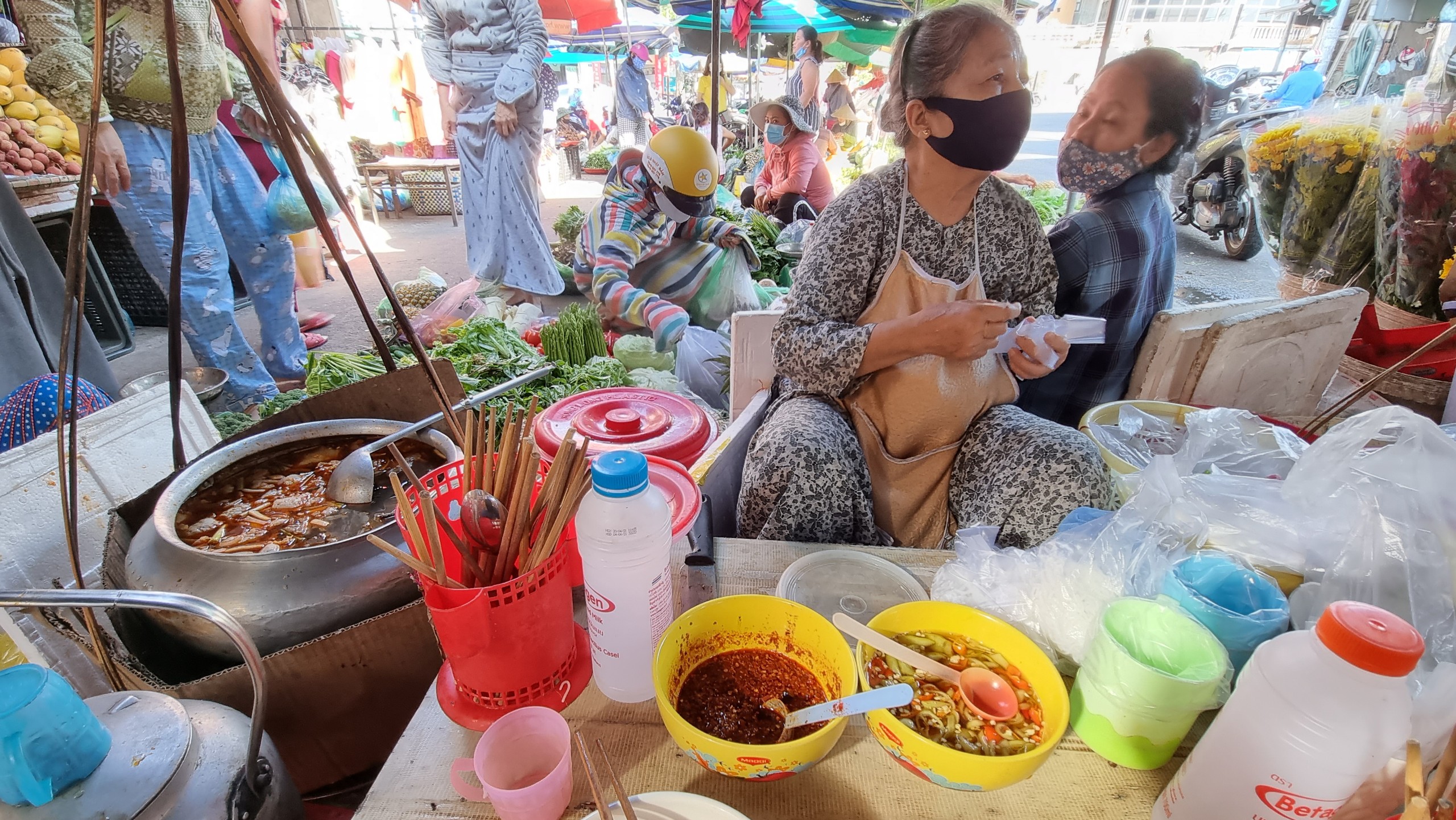Overview
History, geography, soil, and climate are factors that create a distinct culinary region. And Hue possesses all these elements, contributing to the unique characteristics of its cuisine.
Welcome to the diverse and rich world of Hue food Vietnam, a central gem in Vietnamese cuisine
Within the scope of this article, huetoptours will not delve deeply into analyzing these factors, but will provide you with a general understanding of Hue’s culinary delights
Hue Royal Cuisine: A Legacy of the Nguyen Dynasty
Hue, once the capital of Vietnam under the Nguyen Dynasty from 1802 to 1945, witnessed the splendid development of royal cuisine. During those 143 years, the Nguyen emperors created a unique culinary heritage for Hue. The Hue food of the royal court reflects the sophistication and history of the region, showcasing a rich blend of tradition and artistry.
From the moment Gia Long, the founder of the Nguyen Dynasty, chose Hue as the capital, he invited the best chefs to serve in the royal palace. Here, not only were sumptuous meals prepared for the king and the royal family, but also grand banquets, guest receptions, and ritual offerings, all requiring the meticulous craftsmanship of the culinary team.
Today, the Hue Festival, held biennially, strives to recreate these magnificent royal banquets of the past within the heart of the Imperial City. This provides a precious opportunity for visitors to taste and learn about the Nguyen Dynasty’s royal cuisine.
The royal dishes of Hue are renowned for three core elements: visual appeal, aroma, and taste. ‘Eating with the eyes’ is reflected in the delicate arrangement, harmonious colors, and balanced presentation. ‘Capturing the aroma’ involves the art of cooking to create enticing fragrances, while ‘capturing the taste’ is the perfect blend of ingredients and the chef’s skill, resulting in unique and rich flavors.
Although the Nguyen Dynasty ended in August 1945, and many of its royal dishes faded or even became lost amid the turmoil of war and economic hardship, Hue’s royal cuisine remains an inseparable part of Vietnam’s cultural heritage. This is why, even after decades, these invaluable contributions are still remembered and cherished.
The Unique Flavors of Hue's Street Food
Hue’s local cuisine, a rich cultural heritage, mirrors the unique history and geography of this land. Known for its distinct climate and soil, Hue has become a convergence point of various culinary cultures through historical migrations.
Over 500 years ago, under Lord Nguyen Hoang, a significant migration took place from the North to the South. The impoverished people from the North brought not only their memories but also their traditional cooking recipes to Hue. Here, due to differences in soil and climate, these dishes were adapted, creating flavors distinctively ‘Hue’.

Exploring the streets of Hue reveals the everyday Hue food that locals love. A prime example is Hue’s special cakes like Banh Nam and Banh Loc, originally derived from Banh Gio and Banh Bot Loc of the North, but transformed to suit local tastes and ingredients. The differences in soil and climate have contributed to the diversity and uniqueness of Hue’s local cuisine, with each dish not only representing distinct flavors but also reflecting a part of the history and culture of this region.
Particularly noteworthy are Bun Bo and Com Hen, quintessential examples of Hue’s local cuisine. They stand out with their signature spicy flavors, visually appealing broths, and the indispensable Ruoc – a staple spice in every Hue kitchen.
For breakfast in Hue, the options are endless and varied, ranging from Bun, Banh, Chao, Xoi, to Mi. Each dish offers a multitude of variations, diverse cooking styles, and affordable prices to suit everyone.
Additionally, Hue’s cuisine features an array of snack or light meal options like Banh Nam, Banh Loc, Banh Beo, and Banh Ram It. These dishes are characterized by their simplicity, primarily using rice flour or tapioca flour, and are served in small portions perfect for enjoying without spoiling your main meal.
The Influence of Buddhism on Hue Cuisine
Hue’s cuisine not only reflects the glorious history of the former capital under the Nguyen Dynasty but is also deeply influenced by Buddhism, particularly Mahayana Buddhism. The Hue cuisine is greatly influenced by the region’s strong Buddhist traditions. With over 300 temples, large and small, Hue has become a central hub of Buddhism in Central Vietnam, which has significantly enriched its vegetarian culinary scene.
Under the influence of Buddhism, the people of Hue have developed a habit of observing vegetarianism two days each month, on the first and the middle day of the lunar month. This practice is not limited to religious ceremonies or ancestral worship but extends even to the Tet holiday, indicating a preference for vegetarian dishes. This showcases the diversity and richness of Hue’s vegetarian cuisine, surpassing many other regions in Vietnam.
In Hue, vegetarian cuisine isn’t just for vegetarians; it’s a journey into unique flavors for all food lovers. Don’t miss the renowned Banh Beo Chay, a dish that combines the subtle sweetness of rice flour with the rich aromas of mushrooms and tofu for a delicately distinctive taste. The vegetarian twist on the classic Bun Bo Hue maintains its spicy essence, sans meat, for an equally tantalizing experience.
Hue’s vegetarian dining scene, from quaint street-side eateries to elegant restaurants, plays a pivotal role in showcasing this inventive cuisine. Each spot brings its own flair, but all share a commitment to finesse and creativity in both cooking and presentation, ensuring a visually and gastronomically delightful experience for diners.
Where to Eat in Hue: Top 5 Recommended Places
Deciding where to eat in Hue can be a delightful challenge, given the array of excellent choices:
1.Bún Bò Hạnh
https://maps.app.goo.gl/4Z1yZqpAXUW9buyN9
2.Quán Bánh Hạnh
https://maps.app.goo.gl/ssWWjSpk3SKyCJde9
3.Quán Cơm Huế
https://maps.app.goo.gl/Bw8tEMevyqb6xjb68
4.Cơm Chay Sân Mây
https://maps.app.goo.gl/GfxnHu6CN9w82ubW7
5.Quán Bánh Chi
Hue Food Tours: An Unforgettable Experience
If you’re eager to delve deeper into Hue’s unique culinary world and uncover the cultural stories behind each dish, the following food tours are an unmissable experience
Motorbike Food Tour: Tailored for adventure seekers, this tour takes you through Hue’s narrow alleys and suburban areas on a motorbike. It’s a fantastic way to see a different side of Hue, away from the bustling city center.
Food Walking Tour: Perfect for those who prefer to explore on foot, this tour guides you through famous culinary spots while sharing fascinating stories about Hue’s culture and history.
Cyclo Food Tour: For a comfortable and safe culinary journey, the cyclo tour is your go-to. Relax in a cyclo as you’re taken through beautiful streets, sampling Hue’s delicious dishes.
Each tour has its unique strengths and is led by Huetoptours’ local guides, who have deep knowledge of Hue’s history and cuisine. These tours offer not just a taste of delicious food but also a deeper understanding of the city’s rich culture
Conclusion: The Rich Tapestry of Hue's Cuisine
As we have explored, the Hue food Vietnam offers a unique blend of history and flavor, making it a must-try for any food enthusiast.
It’s not just a source of pride for the people of Hue but also a major highlight that draws visitors from around the world to savor and explore.


0 Comment